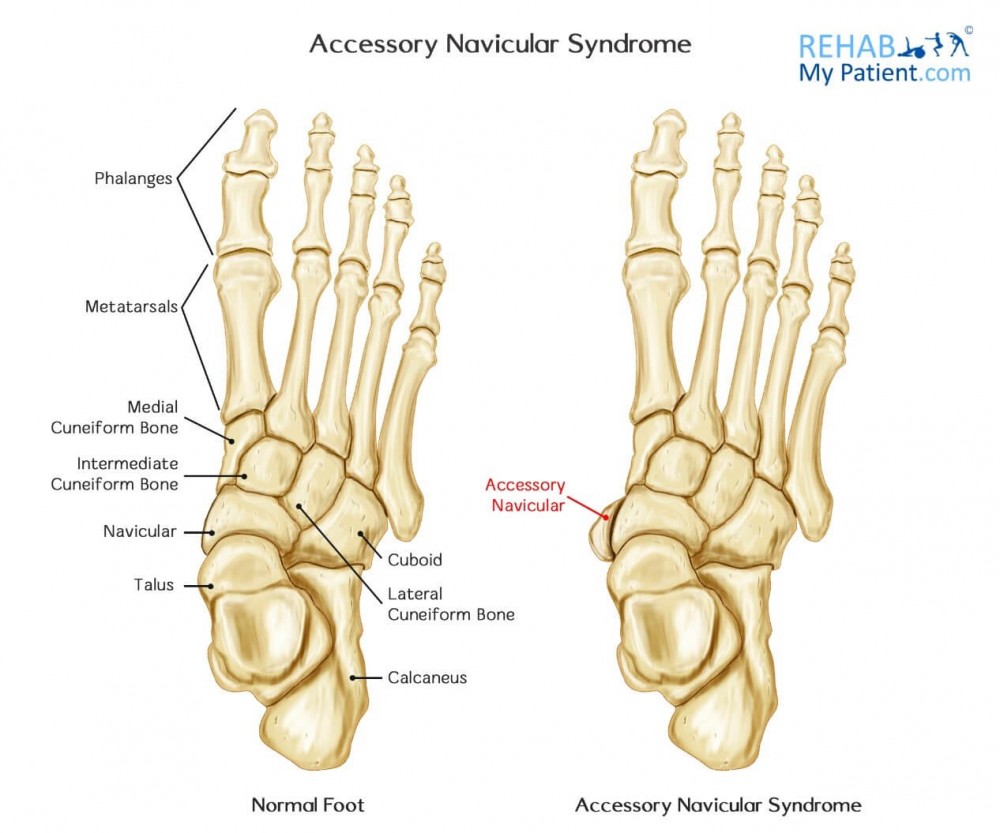Accessory Navicular Syndrome
Posted on 11th Oct 2016 / Published in: Ankle

The accessory navicular is an extra foot bone found in the inner side of the foot next to the navicular bone (a bone on the inside of the foot). It is present since birth (congenital) and thus, it is thought to have a genetic basis. Based on its name, it has no functional role and is not present in majority of population. 
The accessory navicular bone is a sesamoid bone and sits within the posterior tibial tendon. The bone can be small, or it can simply be a protuberance on the end of the navicular.
The navicular (named from “naval”, or boat shaped) sits between the medial cuneiform and the talus and is located in the inside arch of the foot.
Accessory navicular syndrome may be associated with flat feet and usually causes symptoms in adolescence. Pain occurs when the extra bone is aggravated by:
- Trauma
- Friction between the bump of the extra bone and shoes
- Overuse
It is also commonly associated with tendinopathy of the posterior tibial tendon. Flat feet cause increased strain in the posterior tibial tendon which irritate the bone either by mechanical (pulling) or chemical (inflammation) means.
Signs & Symptoms
- Bump (bony prominence) in the inner side of the foot above the arch
- Tenderness and swelling
- Pain in the middle of the foot and arch, usually after activity
The majority of people with accessory navicular bone do not experience symptoms. In symptomatic cases, pain is activity-related.
How to manage pain
- Ice: Use of ice is essential and aims at reducing swelling and inflammation. Apply ice after activity for 5-10 minutes at a time, 3-5 times per day. Make sure that ice is always covered with a thin towel- do not apply ice directly on the skin.
- Manual therapy: treatment is focused on exercises that will help strengthen the muscles and decrease inflammation.
Tips
- Medication: anti-inflammatories (e.g ibuprofen) is usually prescribed in order to reduce inflammation and pain.
- Orthotics (arch support): custom-made insoles can be used aiming at pressure relief
- Avoid excessive activities that aggravate symptoms until pain improves.
- Plaster cast/immobilization: rest your foot in a removable ankle brace- this will help decrease the inflammation and pain.
Sign UP
Sign up for your free trial now!
Get started with Rehab My Patient today and revolutionize your exercise prescription process for effective rehabilitation.
Start Your 14-Day Free Trial